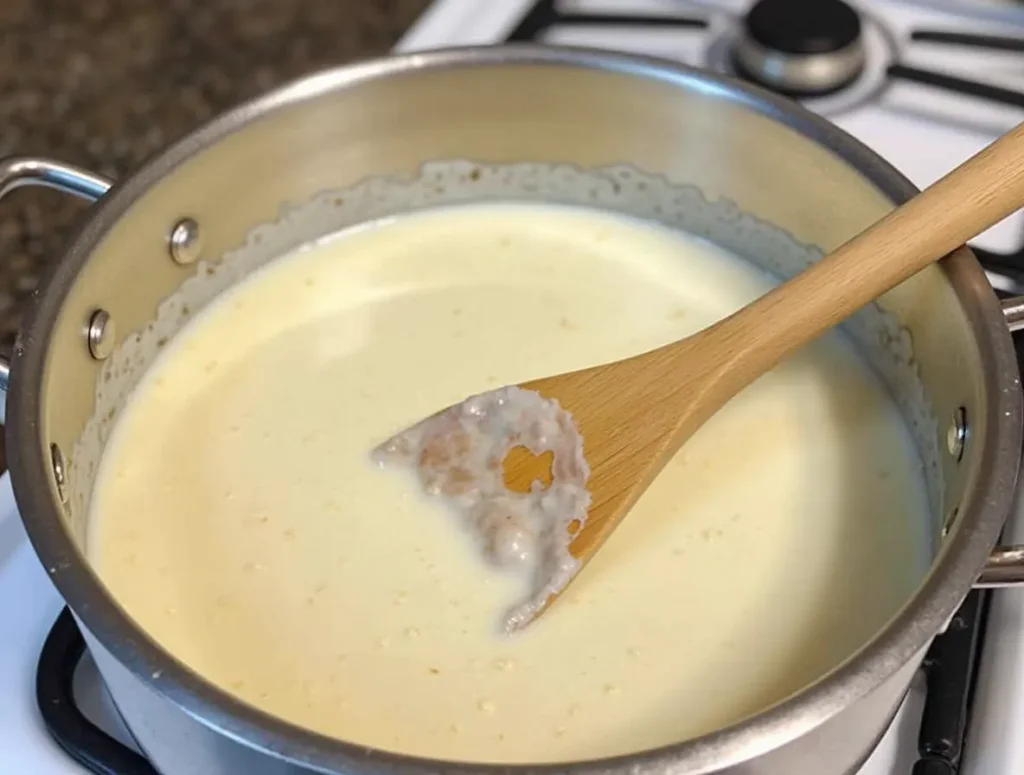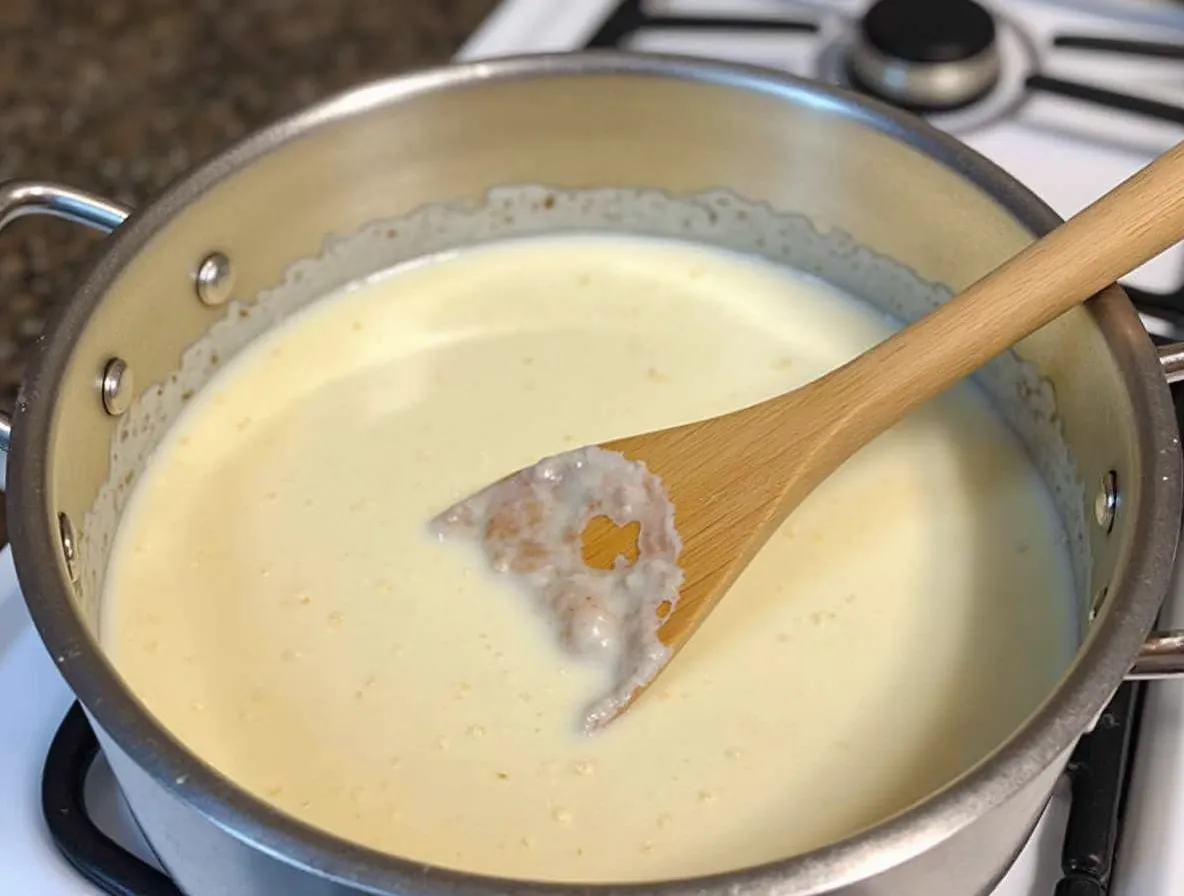The Only Recipe for White Sauce You’ll Ever Need
Ever find yourself craving something creamy, rich, and comforting — but simple enough to whip up with pantry basics? Whether you’re layering lasagna, drizzling over steamed veggies, or tossing with pasta, the perfect white sauce is a game-changer in the kitchen. And guess what? You don’t have to be a chef to make it.
In this blog, I’m sharing my go-to recipe for white sauce — also known as béchamel, a creamy, milk-based sauce that’s a staple in French cuisine but loved worldwide. Why? Because it’s versatile, beginner-friendly, and just so darn delicious.
You might’ve seen fancy recipes calling for five types of cheese or exotic ingredients. This is not that. This is the white sauce recipe your grandma probably made — with a few modern twists, expert tips, and real-life advice to help you totally nail it.
So, if you’ve ever asked yourself, “How do I make white sauce from scratch?” or “What’s the secret to smooth, lump-free white sauce?” — you’re in the right place. Let’s dive in.
Why This Recipe is Perfect for Home Cooks and Food Lovers
This sauce is for everyone — busy parents, college students, foodies, and even those just learning to cook. Why?
- It uses only three main ingredients: butter, flour, and milk.
- It’s ready in under 15 minutes.
- You can use it as a base for mac and cheese, a lasagna sauce, or a creamy addition to roasted veggies.
- It’s easily adaptable: gluten-free, dairy-free, low-fat? No problem.
- It feels fancy without being fussy.
Let’s be honest, there’s nothing like a good homemade white sauce to turn a basic meal into a cozy, soul-hugging experience. Ready to learn the secret?
Ingredients
Essential Ingredients for White Sauce
Here’s your shopping list for this classic white sauce — all ingredients you likely have on hand.
| Ingredient | Amount | Purpose |
|---|---|---|
| Butter | 2 tablespoons | Forms the roux (the base of the sauce) |
| All-purpose flour | 2 tablespoons | Helps thicken the sauce |
| Whole milk | 2 cups | The creamy, smooth body of the sauce |
| Salt | ¼ teaspoon | Enhances flavor |
| Black pepper | To taste | Adds subtle heat |
| Nutmeg (optional) | A pinch | Traditional for béchamel; adds warmth |
Substitutes for Key Ingredients
Out of something? No worries — you’ve got options:
- Butter: Use olive oil or vegan butter.
- Flour: Try gluten-free all-purpose flour or cornstarch (adjust quantity).
- Milk: Oat milk, almond milk, or even soy milk work great. Just go for unsweetened and unflavored.
- Nutmeg: Optional, but adds that cozy, traditional touch.
Equipment Needed
Essential Tools for Making White Sauce
You really don’t need fancy gadgets here. Just the basics.
- Medium saucepan
- Whisk (this is key for lump-free sauce!)
- Measuring cups and spoons
- Wooden spoon or heat-safe spatula
Optional Equipment for Enhanced Results
Want to step up your sauce game?
- Fine mesh strainer (for ultra-smooth texture)
- Silicone whisk (gentler on nonstick pans)
- Milk frother (for pre-warming milk evenly)
What to Look for in a Saucepan
A heavy-bottomed saucepan is your best friend here. It distributes heat evenly and prevents burning. Stainless steel or ceramic-coated pans work wonderfully.
Step-by-Step Instructions
Let’s walk through this step-by-step so you can actually enjoy making your white sauce without stress.
Step 1: Melt the Butter
Place your saucepan on medium heat and add the butter. Let it melt slowly — you want it fully melted but not browned or burned.
Step 2: Add the Flour and Make a Roux
Whisk in the flour gradually, stirring constantly. Cook for about 1-2 minutes to form a smooth roux. This step cooks out the raw flour taste.
Pro tip: Your roux should look like wet sand — golden and bubbling.
Step 3: Slowly Add Milk While Whisking
Here’s the magic moment. Gradually pour in the milk while whisking continuously to prevent lumps. Keep stirring until everything is smooth.
Step 4: Simmer and Thicken
Let the sauce simmer (not boil!) for about 5-7 minutes, stirring frequently. The sauce will begin to thicken into a rich, creamy texture.
Step 5: Season to Taste
Add salt, pepper, and a pinch of nutmeg if using. Give it a taste — need more salt? A little garlic powder? Make it yours.

Tips & Tricks for Success
Time of Cooking
- The whole process takes 10 to 15 minutes max.
- Don’t rush the roux — it needs 1-2 minutes to develop flavor.
- Stir constantly while simmering to avoid burning or clumping.
How to Make White Sauce Even Better
- Infuse your milk with a bay leaf, garlic, or onion before adding it.
- Add shredded Parmesan or cheddar for a killer cheese sauce.
- Want depth? Try a splash of white wine or broth.
Common Mistakes to Avoid
- Overheating the pan: causes burning and uneven cooking.
- Pouring milk too fast: leads to lumps.
- Skipping the roux cooking time: results in a raw flour taste.
Time-Saving Tips for White Sauce
- Prep ingredients ahead of time.
- Use pre-warmed milk — it blends faster and smoother.
- Make a double batch and refrigerate for up to 4 days or freeze in portions.
Variations and Substitutes
White Sauce Variations for Different Diets
- Vegan White Sauce: Use vegan butter or olive oil and plant milk.
- Gluten-Free White Sauce: Use gluten-free flour or cornstarch.
- Low-Fat Version: Use low-fat milk and reduce the butter slightly.
Creative Twists to Try
- Cheesy White Sauce: Stir in cheddar, Gruyère, or cream cheese.
- Garlic Herb Sauce: Add minced garlic and fresh thyme.
- Spicy Kick: Mix in cayenne or chili flakes.
- Mustard Béchamel: Add Dijon mustard for a tangy depth.
How to Serve White Sauce
Best Side Dishes to Pair with White Sauce
- Steamed broccoli or cauliflower
- Roasted chicken or turkey
- Pan-seared salmon
- Mashed potatoes
Serving Suggestions for Occasions
- Family dinners: Pour over baked pasta or vegetables.
- Holidays: Use in creamy casseroles or lasagna.
- Date nights: Serve with seafood linguine and white wine.
Nutritional Information
Calories per Serving
Approximately 120 calories per ¼ cup serving (using whole milk and butter).
Other Key Nutrients
- Fat: 8g
- Protein: 3g
- Carbs: 7g
- Calcium: 100mg
How to Make It Healthier
- Use low-fat milk and less butter.
- Skip the salt and add herbs for flavor.
- Add pureed cauliflower or white beans to boost nutrition without changing texture too much.
Conclusion
You made it! Hopefully now you’re feeling confident about making your own recipe for white sauce from scratch. This recipe is proof that good food doesn’t have to be complicated. Whether you’re a beginner or a seasoned home cook, this creamy, dreamy sauce belongs in your regular rotation.
Remember, you’re not just making a sauce — you’re creating the base for comfort food classics, weeknight wins, and even fancy dinner party flexes. Plus, once you’ve mastered this basic white sauce, the variations are truly endless.
Tried this recipe? Let us know how it turned out in the comments!
Love it? Share this post with a fellow foodie or pin it for later.
Hungry for more? Follow us on Instagram and Pinterest for more cozy, craveable recipes just like this one.
FAQs
What is recipe for white sauce made of?
White sauce, or béchamel, is made from butter, flour, and milk — that’s it. The butter and flour form a roux, which thickens the milk into a smooth, creamy sauce. You can season it with salt, pepper, and nutmeg, or build on it by adding cheese or herbs.
Can I make white sauce ahead of time?
Absolutely. White sauce stores well in the fridge for up to 4 days. Just let it cool completely, then store it in an airtight container. When reheating, do it gently over low heat and whisk in a splash of milk to bring it back to life.
How do I fix lumpy white sauce?
If your sauce turns out lumpy, don’t panic. You can use a whisk or an immersion blender to smooth it out. For future batches, make sure to add the milk gradually while whisking constantly and ensure the roux is well-cooked.
Can I freeze white sauce?
Yes, but with some caveats. Freeze it in portions, and be sure to whisk well when reheating — the texture may change slightly. Add a bit of milk or broth to adjust the consistency as needed.

